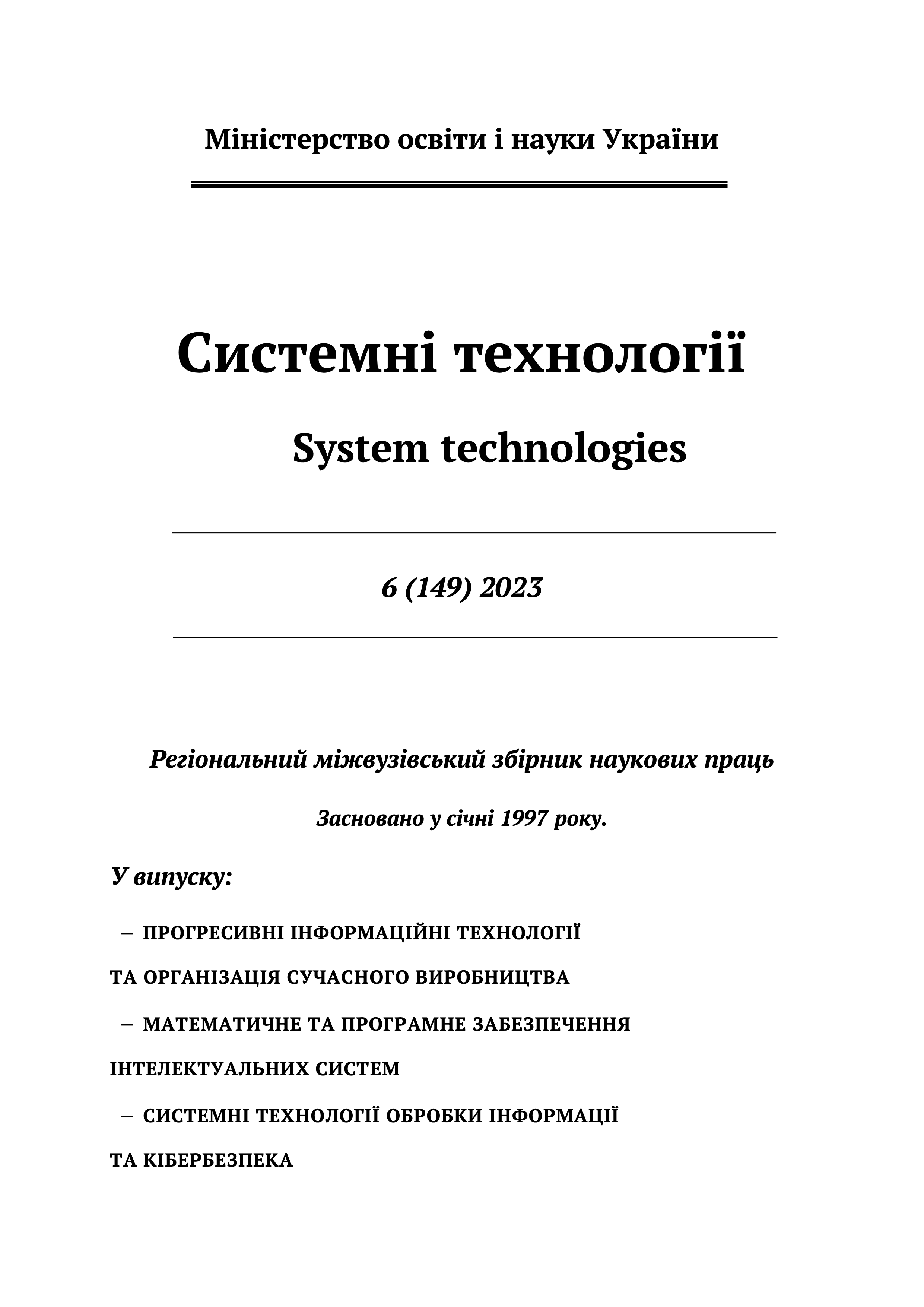Properties of processing and data acquisition methods in test methods of chemical analysis
DOI:
https://doi.org/10.34185/1562-9945-6-149-2023-04Keywords:
data processing, scanner indication, smartphone camera, express analysis, analytical signal, point of interest, test methods.Abstract
Chemical analysis is a crucial source of information for assessing the state of the environment, evaluating the human body condition, and serving as a diagnostic tool for detecting diseases and more. The use of simple, rapid, and cost-effective analysis methods without the need for specialized laboratory conditions and personnel with specific qualifications, such as test methods, contributes to the effective implementation of well-known techniques for analyzing the chemical composition of environmental objects and for use in the field of healthcare. Scanner indication of the analytical signal in chemical analysis is an objective, fast, and automated method for assessing the color characteristics of colored samples. The use of scanner indication in obtaining the analytical signal eliminates errors associated with subjective evaluation and assists individuals with color vision impairments, speeding up data collection and processing operations. Considering and controlling the light source in scanning systems is crucial to ensuring the stability and accuracy of obtained images under different lighting conditions. To obtain the analytical signal, it is primarily necessary to process the image to obtain the region of interest, which is determined by segmentation, manual methods, and using image processing techniques. The analysis of obtained values is carried out by constructing a linear or nonlinear relationship of color values in the selected color model converted to a single value of the analytical signal to concentration. Most existing systems for scanner detection of the analytical signal in analytical test methods require human involvement in obtaining and interpreting results, limiting the application areas of these methods of analytical signal indication. Further research is focused on creating a reliable method for obtaining the analytical signal using a smartphone camera based on image processing techniques, allowing for the automation of obtaining, processing, and improving the reproducibility of results in chemical test analyses.
References
L.F. Capitán-Vallvey, N. López-Ruiz, A. Martínez-Olmos, M.M. Erenas, A.J.Palma, Recent Developments in Computer Vision-Based Analytical Chemistry: A Tutorial Review, Analytica Chimica Acta (2015), doi: 10.1016/j.aca.2015.10.009.
V. Oncescu, D. O'Dell, D. Erickson, Smartphone based health accessory for colorimetric detection of biomarkers in sweat and saliva, Lab Chip 13 (2013)
-38.
C.A. Chaplan, H.T. Mitchell, A.W. Martinez, Paper-based standard addition assays, Anal.Methods 6 (2014) 1296-300.
Z. Iqbal, R.B. Bjorklund, Colorimetric analysis of water and sand samples performed on a mobile phone, Talanta 84 (2011) 1118-23.
K. Cantrell, M.M. Erenas, I. Orbe-Paya, L.F. Capitan-Vallvey, Use of the Hue Parameter of the Hue, Saturation, Value Color Space as a Quantitative Analytical Parameter for Bitonal Optical Sensors, Anal.Chem. 82 (2010) 531-42
Q. Wei, R. Nagi, K. Sadeghi, S. Feng, E. Yan, S.J. Ki, R. Caire, D. Tseng, A. Ozcan, Detection and Spatial Mapping of Mercury Contamination in Water Samples Using a Smart-Phone, ACS Nano 8 (2014) 1121-29.
A. Garcia, M.M. Erenas, E.D. Marinetto, C.A. Abad, I. de Orbe-Paya, A.J. Palma, L.F. Capitan-Vallvey, Mobile phone platform as portable chemical analyzer, Sens.Actuators B 156 (2011) 350-59.
M. Ariza-Avidad, A. Salinas-Castillo, M.P. Cuellar, M. Agudo-Acemel, M.C. Pegalajar, L.F. Capitan-Vallvey, Printed Disposable Colorimetric Array for Metal Ion Discrimination, Anal.Chem. 86 (2014) 8634-41.
D. Lee, W.P. Chou, S.H. Yeh, P.J. Chen, P.H. Chen, DNA detection using commercial mobile phones, Biosens.Bioelectron. 26 (2011) 4349-54.
V.F. Curto, C. Fay, S. Coyle, R. Byrne, M. O'Toole, C. Barry, S. Hughes, N. Moyna, D. Diamond, F. Benito-Lopez, Real-time sweat pH monitoring based on a wearable chemical barcode micro-fluidic platform incorporating ionic liquids, Sens.Actuators B 171-172 (2012) 1327-34.
V.V. Apyari, S.G. Dmitrienko, Using a digital camera and computer data processing for the determination of organic substances with diazotized polyurethane foams, J.Anal.Chem. 63 (2008) 530-37.
S.V. Bannur, S.V. Kulgod, S.S. Metkar, S.K. Mahajan, J.K. Sainis, Protein Determination by Ponceau S Using Digital Color Image Analysis of Protein Spots on Nitrocellulose Membranes, Anal.Biochem. 267 (1999) 382-89.
M.M. Mentele, J. Cunningham, K. Koehler, J. Volckens, C.S. Henry, Microfluidic Paper-Based Analytical Device for Particulate Metals, Anal.Chem. 84 (2012) 4474-80.
T. Soga, Y. Jimbo, K. Suzuki, D. Citterio, Inkjet-Printed Paper-Based Colorimetric Sensor Array for the Discrimination of Volatile Primary Amines, Anal.Chem. 85 (2013) 8973-78.
R.C. Murdock, L. Shen, D.K. Griffin, N. Kelley-Loughnane, I. Papautsky, J.A. Hagen, Optimization of a Paper-Based ELISA for a Human Performance Biomarker, Anal.Chem. 85 (2013) 11634-42.
A. Choodum, N. Nic Daeid, Rapid and semi-quantitative presumptive tests for opiate drugs, Talanta 86 (2011) 284-92.
A. Abbaspour, A. Khajehzadeh, A. Noori, A simple and selective sensor for the determination of ascorbic acid in vitamin C tablets based on paptode, Anal.Sci. 24 (2008) 721-25.
F.G. Souza, Jr., G.E. Oliveira, T. Anzai, P. Richa, T. Cosme, M. Nele, C.H.M. Rodrigues, B.G. Soares, J.C. Pinto, A Sensor for Acid Concentration Based on Cellulose Paper Sheets Modified with Polyaniline Nanoparticles, Macromol.Mater.Eng. 294 (2009) 739-48.
S. Sumriddetchkajorn, K. Chaitavon, Y. Intaravanne, Mobile device based self-referencing colorimeter for monitoring chlorine concentration in water, Sens.Actuators B 182 (2013) 592-97.
C. Zhang, K.S. Suslick, Colorimetric Sensor Array for Soft Drink Analysis, J.Agric.Food Chem. 55 (2007) 237-42.
Downloads
Published
Issue
Section
License
Copyright (c) 2024 System technologies

This work is licensed under a Creative Commons Attribution 4.0 International License.















